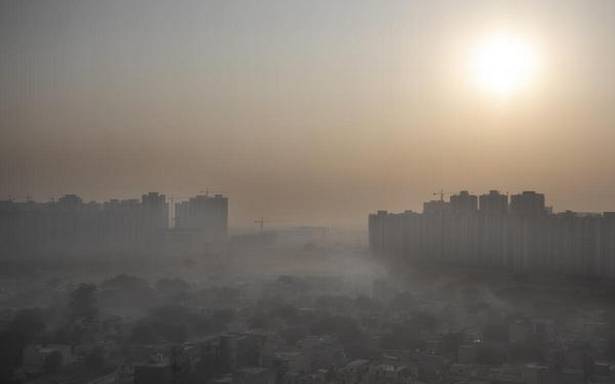A day before Deepavali, air quality has dipped to a seasonal low of 320 — or the “very poor” category in the Delhi National Capital Region. Despite a spike in instances of farm fires from Punjab and Haryana this week, they aren’t a contributor to the quality, according to meteorological analysts.
There were close to 2,700 instances of stubble burning on Wednesday and on Tuesday, 3000 instances recorded from Punjab, 203 from Haryana and 87 from Uttar Pradesh. “The contribution of biomass burning in PM2.5 concentration is likely to be less than 5% as winds are not favourable for transportation of pollutants,” according to an analysis from the Air Quality Early Warning System of the Ministry of Earth Sciences.
The air quality over Delhi is likely to remain poor, at least until November 6 and then improve from an anticipated rise in windspeeds. Moisture and the lack of adequate winds also lower the mixing height that then retards the natural dispersion of pollutants. A mixing height less than 6,000 m with average wind speed less than 10 kmph is unfavourable for dispersion of pollutants. Currently the mixing depths are around 1,700 m and windspeeds less than 10 kmph.
A note on Wednesday from the Commission for Air Quality Management (CAQM) said instances of stubble burning and farm fires from Punjab and Haryana were down by 50% from last year.
The active paddy residue burning events in Punjab, Haryana, NCR districts of Uttar Pradesh and Rajasthan and the National Capital Territory of Delhi have come down from 43,918 in 2020 to 21,364 in 2021 during September 15-November 2, thus registering an overall reduction in the fire counts by 22,554.
The hotspots of paddy residue burning in Punjab are Tarn Taran, Amritsar, Firozpur, Patiala, Ludhiana and Kapurthala. Similarly, the hotspots in Haryana are Kaithal, Karnal, Kurukshetra, Fatehabad, Ambala and Jind.
So far, 8,575 fields where stubble burning was reported have been inspected by the enforcement agencies and officials of the respective States and Environmental Compensation (EC) of about ₹58,05,000 has been imposed, according to the CAQM.
This year instances of stubble burning, according to CAQM in a communique last month, were expected to be low as the acreage under non-basmati rice crop was lower than in previous years. Steps have also been taken to disincentivise farmers from burning.
Monsoon rainfall in September was unusually high this year and extended into the northern States much beyond their normal tenure leading to delayed harvesting.


